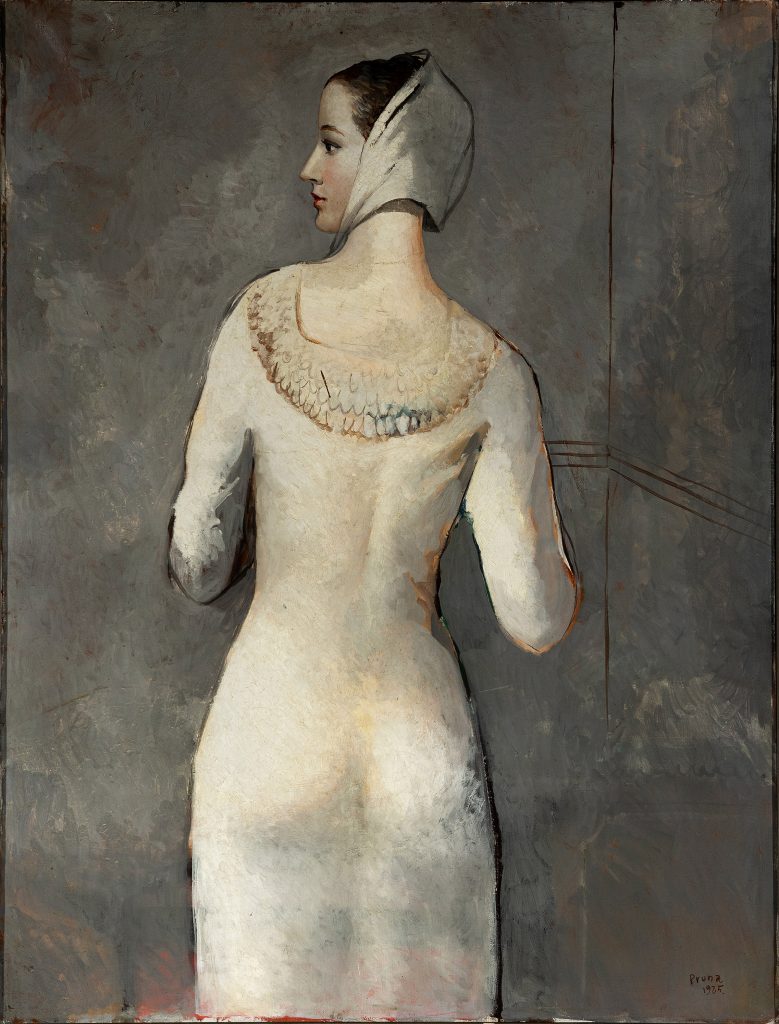Pere Pruna under the influence of Pablo Picasso
The most Picassian work of Pere Pruna stands out among the set of works in tender next March 15
Around the figure of Picasso, a large number of Spanish artists gathered in Paris, whose beginnings are closely linked to the genius from Malaga. One of the most notable cases is that of Pere Pruna, whose success and recognition will forever be linked to the personal and professional bond with his friend and mentor Pablo Picasso.
In 1921, when she was only 17 years old and with little training, Pruna decided to settle in Paris, a city that would offer her, thanks to the letter written by Sebastia Sunyer, the opportunity to meet Pablo Picasso. The good harmony between the two artists became evident almost immediately to the point of becoming the guide of his first steps in the capital of art that was Paris at the time. After observing the work of Pruna, Picasso did not hesitate to recognize the talent of this young artist , who immediately put him in contact with his own dealers. Among them was Andre Lebel, who as director of Galerie Percier agreed to represent the Catalan painter. As a result of this first collaboration that took place in 1924 , the germ of a golden stage in the production of Pruna would be born that would lead it to achieve resounding international success . In this way , the support of Picasso during these years was decisive for Pruna who, under his protection, became part of the artistic and intellectual circles of the Parisian city until she founded, together with such prominent figures as Jean Cocteau, the magazine Philosophie. In fact, the close bond they forged led Cocteau and Picasso himself to become Pere Pruna’s groomsmen.
Already in his first exhibition at the Galerie Percier in 1924, Pruna’s work allows us to see to what extent the influence of Pablo Picasso was decisive, who at that time was immersed in his “classicist” era. In fact, in the entire production carried out in Paris During the 1920s, that Picasso imprint, so evident in works such as the one that concerns us here, would remain latent. “Le Blanche” made in 1926 is fully part of the classicizing current of return to order that broke into Western art after the first avant-garde wave. Focused on the representation of the female figure, Pruna offers us a portrait in which the body and face of the young woman with her back to us is revealed to us with masterful elegance. The subtle contours of the female forms are glimpsed under the play of light and shadow that define a dress, whose chromaticism reverberates in the pearly carnations of the woman. Without a doubt, the stylization and delicacy that emerges from it It takes us completely to the Picasso of the pink and neoclassical stage, but it also allows us to glimpse a certain parallelism with the Novecento Italiano whose representatives wanted to renew Italian art by linking their work with that of the great masters of the renaissance ,
The artistic value of this work is endorsed, in addition to its evident plastic quality, by the labels that we can find on the back of the canvas . In this case they are especially significant since they indicate the presence of this work in the Pitsburg International Dog Shows, known in Europe as the “Careggi Award”. Founded in 1896 by Andrew Carneggie, they had the dual objective of facilitating American artists’ confrontation with European painting while also wanting to contribute to understanding between nations through art. We must also take into account that for a long time they represented the only way in which the Spanish representatives of modern painting, such as Pere Pruna, could make themselves known in the United States. In fact, the prize awarded to the Catalan artist in 1928 and the recognition that “The Red Apron” received two years later, being described by critics as the best work in the exhibition , definitively catapulted him as one of the most valued Spanish artists in North America. America.
The vital importance of this stage in his career is underscored by the interest that still arouses the works made in these years, whose past success is currently revived in the international art market.






